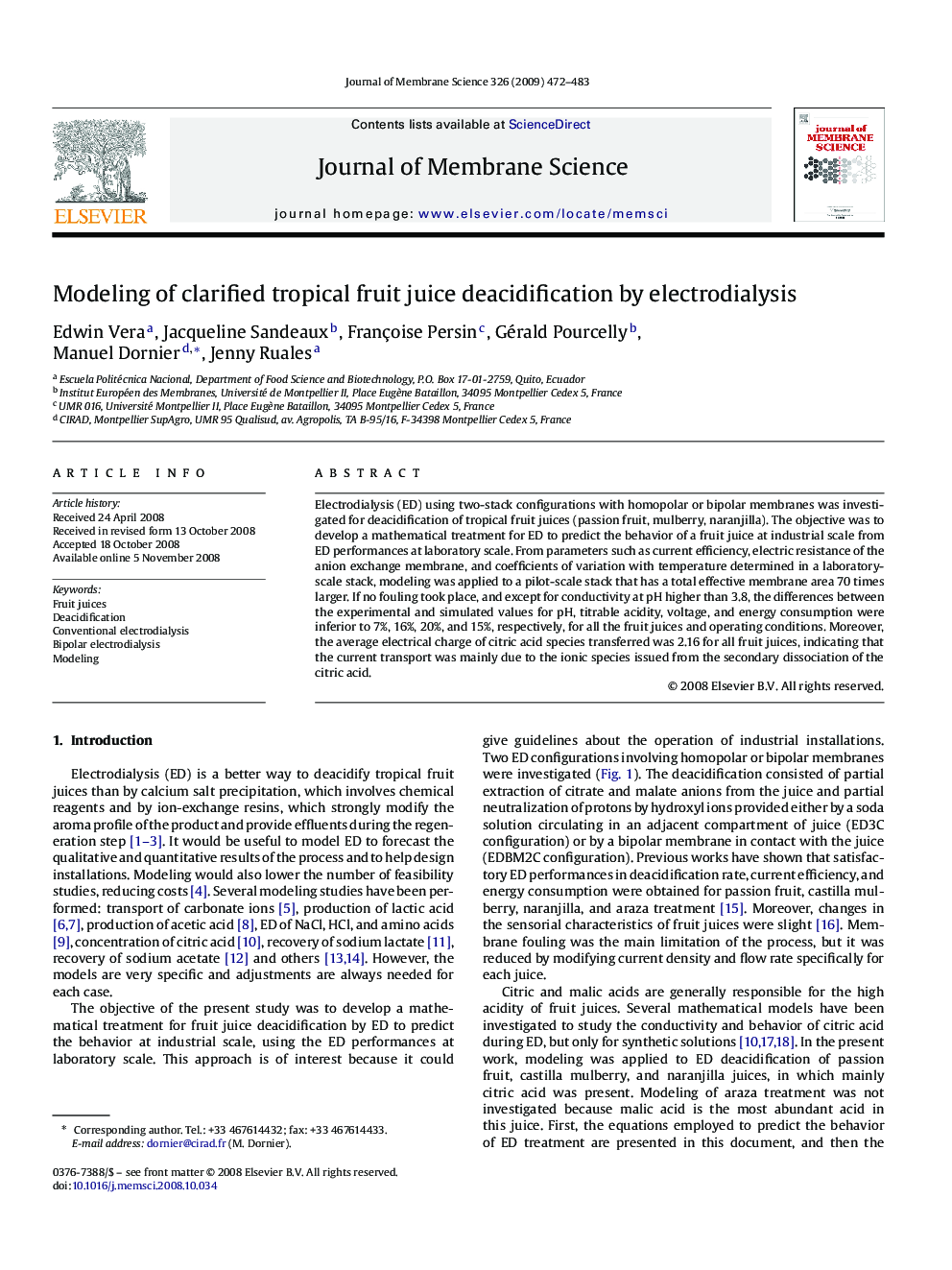| Article ID | Journal | Published Year | Pages | File Type |
|---|---|---|---|---|
| 637405 | Journal of Membrane Science | 2009 | 12 Pages |
Electrodialysis (ED) using two-stack configurations with homopolar or bipolar membranes was investigated for deacidification of tropical fruit juices (passion fruit, mulberry, naranjilla). The objective was to develop a mathematical treatment for ED to predict the behavior of a fruit juice at industrial scale from ED performances at laboratory scale. From parameters such as current efficiency, electric resistance of the anion exchange membrane, and coefficients of variation with temperature determined in a laboratory-scale stack, modeling was applied to a pilot-scale stack that has a total effective membrane area 70 times larger. If no fouling took place, and except for conductivity at pH higher than 3.8, the differences between the experimental and simulated values for pH, titrable acidity, voltage, and energy consumption were inferior to 7%, 16%, 20%, and 15%, respectively, for all the fruit juices and operating conditions. Moreover, the average electrical charge of citric acid species transferred was 2.16 for all fruit juices, indicating that the current transport was mainly due to the ionic species issued from the secondary dissociation of the citric acid.
